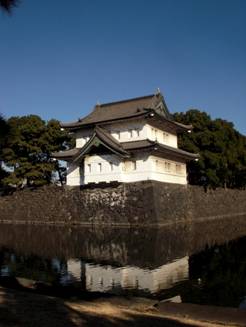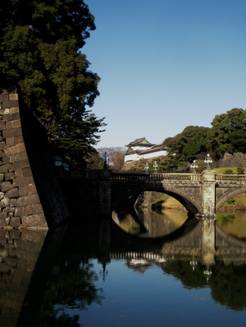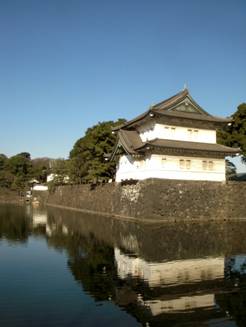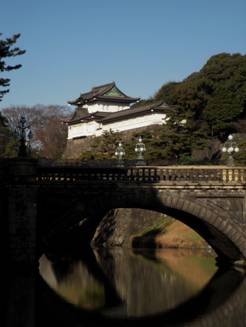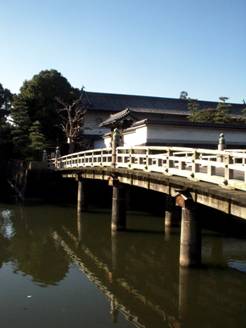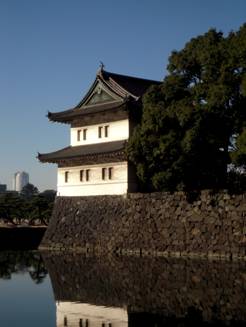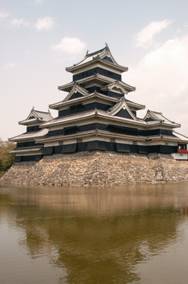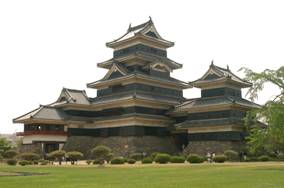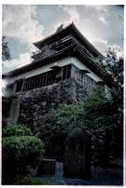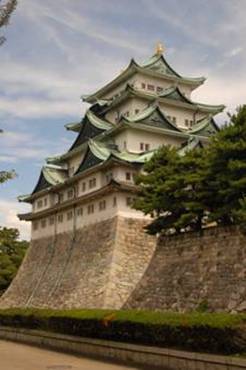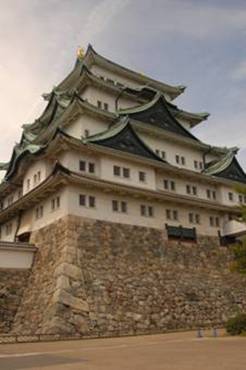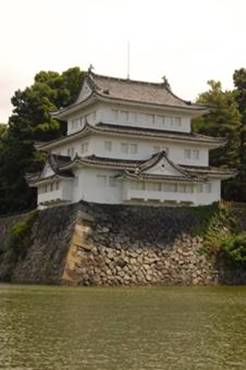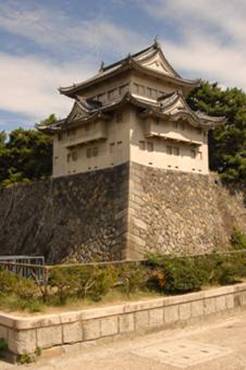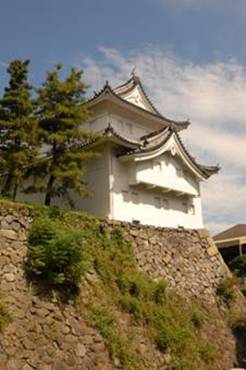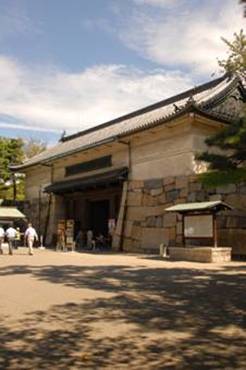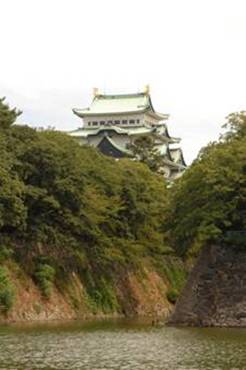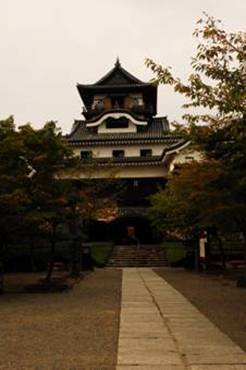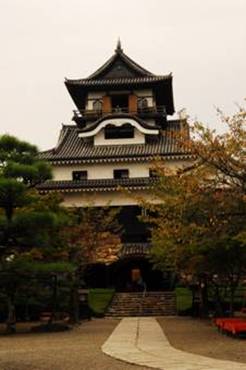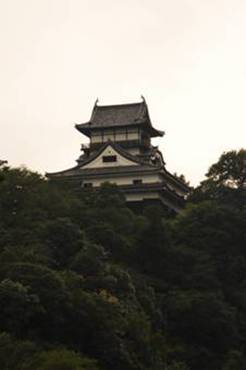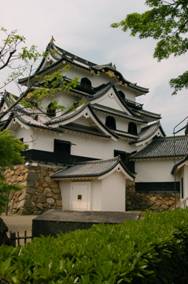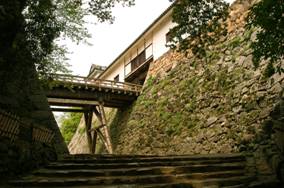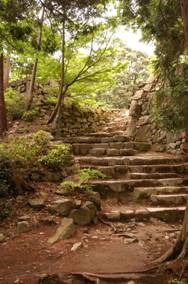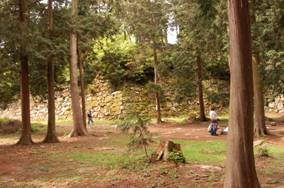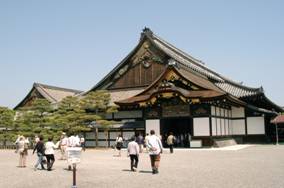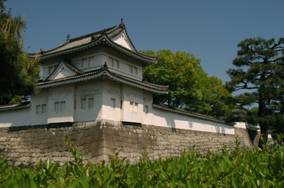|
TAK'S
GUIDE TO JAPANESE CASTLES |
|
EDO-JO |
|
|
Corner tower and moat、Nijubashi(Dual Bridge), Tatsumi Tower |
|
|
AKA |
CHIYODA-JO, KOKYO |
|
LOCATION |
CHIYODA-ku, CHUOH-ku,
MINATO-ku, SHINJUKU-ku,
TAITOH-ku, |
|
CONSTRUCTOR |
Ohta Dohkan |
|
YEAR OF CONSTRUCTION |
1457 |
|
REMAINS |
Keeps, remains of donjon, gates, bridges, stone works |
|
MY FIRST VISIT |
1999 |
|
NOTES |
Although Edo-jo was first constructed by a minor
regional warlord Ohta Dohkan in
the 15th century, minor fortifications had been constructed since the late Heian era (11th century). After the death of Dohkan, Edo-jo was
taken over by the Hojo
family, a major regional warlord. Edo-jo was neglected for nearly a century. Edo-jo became a center of historical
attention in 1590, when it was designated the main Ieyasu, upon entering the
castle, reconstructed the castle literally from the ground up, until it
became the largest castle in Although it took
nearly 50 years to complete, the entire castle complex deteriorated soon
after, starting from the destruction of the donjon (central tower) by a major
fire in 1657. Currently, Edo-jo is better known as 'KOHKYO', or the Imperial Residence. |
|
Nijubashi( |
|
|
MATSUMOTO-JO |
|
|
Donjon (central tower) |
|
|
AKA |
FUKASHI-JO, KARASU-JO |
|
LOCATION |
|
|
CONSTRUCTOR |
Ishikawa Kazumasa, Yasunaga |
|
YEAR OF CONSTRUCTION |
|
|
REMAINS |
Central keep, secondary keep, main donjon, and minor donjons
(designated 'National Treasure') |
|
MY FIRST VISIT |
2000 |
|
NOTES |
Matsumoto-jo was built by Ishikawa
Kazumasa in late 16th century. With central
keep, secondary keep, and tertiary keep, as well as residences for retained
samurais, the entire castle complex covered an area of nearly forty thousand
square meters. After the Meiji Restoration (end of
shogun's rule) in 1867, donjon was slated to be torn down, but it was
purchased by a private citizen who called for its preservation. Since then,
many citizens have called for its preservation every time it faced the danger
of destruction. Currently, the donjon is designated
'National Treasure', and is preserved by |
|
The central
towers viewed from the central keep. |
|
|
MARUOKA-JO |
|
|
Donjon (central tower) |
|
|
AKA |
KASUMIGA-JO |
|
LOCATION |
KASUMI-cho, MARUOKA-cho,
SAKAI-gun, |
|
CONSTRUCTOR |
Shibata Katsutoyo |
|
YEAR OF CONSTRUCTION |
1575 |
|
REMAINS |
Central keep, donjon |
|
MY FIRST VISIT |
|
|
NOTES |
Maruoka-jo was built by Shibata Katsutoyo,
a nephew of a major warlord Shibata Katsuie, in 1575. After Shibata family lost the power struggle between Toyotomi Hideyoshi
(who later became the ruler of The donjon is reported to be the
oldest remaining. Maruoka-jo was designated
'National Treasure' after Meiji Restoration (end of Shogun's rule), but was
destroyed in the Fukui Earthquake of 1948. The current donjon was
reconstructed using materials recycled from the destroyed donjon. It was
later designated 'Major Cultural Artifact' |
|
NAGOYA-JO |
|
|
Donjon (central tower), reconstructed
after WWII |
|
|
AKA |
HOSA-JO, YORYO-JO, KAMEO-JO |
|
LOCATION |
NAGOYA-city, AICHI |
|
CONSTRUCTOR |
Tokugawa Ieyasu |
|
YEAR OF CONSTRUCTION |
1612 |
|
REMAINS |
Central keep, secondary keep, stone works, corner towers (2),
gates |
|
MY FIRST VISIT |
1996 |
|
NOTES |
Nagoya-jo was one of many castles constructed by Shogun Tokugawa Ieyasu
to surround and isolate Toyotomi family's Osaka-jo
(Old). Major sections of the castle were completed in 1614. Since Ieyasu avoided
direct confrontation until then, Ieyasu viewed Nagoya-jo as strategically significant. Nagoya-jo had a main donjon and a smaller donjon. Another
smaller donjon was planned, but that plan was scrapped because Ieyasu won the
war with the Toyotomi
family, and Nagoya-jo
lost its strategic significance. While other donjons built by the Shogunate such as Osaka-jo
(New) and Edo-jo were lost in fires, Nagoya-jo's donjon remained standing even
after the Meiji Restoration (end of shogun's rule) in 1867. After the Meiji Restoration, all
structures in the secondary keep were torn down (shameful loss), but the structures
in the central keep were maintained by the Imperial Army. But majority,
including the donjon, were destroyed during air raids in World War II (even
greater shame). |
|
Donjon, Hokusei
(Northwest) Tower, Nansei (Southwest) Tower
Nantou (Southeast) Tower, Otemon
(Main Gate), moat and Donjon |
|
|
INUYAMA-JO |
|
|
Donjon (central tower) |
|
|
AKA |
HAKUTEI-JO |
|
LOCATION |
INUYAMA-city, AICHI |
|
CONSTRUCTOR |
Oda Nobuyasu |
|
YEAR OF CONSTRUCTION |
1537 |
|
REMAINS |
Central keep, donjon (National Treasure) |
|
MY FIRST VISIT |
1996 |
|
NOTES |
Inuyama-jo's donjon is said to
be the oldest remaining. Although Inuyama-jo is noted today for its
cultural significance and magnificent view from the Kiso
river, its history is written in blood, with retainers shifting by its
destruction in battles. It was originally built by the Oda family, but
when a power struggle within the Oda family started, it was attacked and destroyed by Oda Nobunaga who eventually won the
struggle (and later became the ruler of In 1618, Inuyama-jo came under the
possession of the Narise
family. It became a government property after the Meiji Restoration (end of
Shogun's rule) in 1867. It once again became Narise family's possession
after it was destroyed in an earthquake, when Narise family agreed to restore
it. For a long time, it was the only
privately-owned castle in |
|
Donjon, Inuyama-jo viewed from the
riverbank of Kiso river |
|
|
HIKONE-JO |
|
|
Donjon (central tower) |
|
|
AKA |
KINKI-JO |
|
LOCATION |
HIKONE-City, SHIGA |
|
CONSTRUCTOR |
Ii Naotsugu, Ii Naotaka |
|
YEAR OF CONSTRUCTION |
1603 |
|
REMAINS |
Central keep, secondary keep, stone works, moats, donjon
(National Treasure), corner towers |
|
MY FIRST VISIT |
1996 |
|
NOTES |
Hikone-jo was built by the Ii family in 1603, and remained in
their possession until the Meiji Restoration (end of Shogun's rule) in 1867. Structures remaining in the castle
were slated to be torn down after the Meiji Restoration. But when Emperor
Meiji visited Hikone City, Ohkuma Shigenobu, one of the ministers
accompanying the Emperor, advised the preservation of the castle. The Emperor
agreed, and Hikone-jo
was saved from destruction. Now, I wonder why other castles were
not rescued the same way. Hikone-jo's donjon is designated
'National Treasure'. |
|
Tenbin Yagura
(Tower) |
|
|
AZUCHI-JO |
|
|
Stone works of the central tower |
|
|
AKA |
|
|
LOCATION |
|
|
CONSTRUCTOR |
Oda Nobunaga |
|
YEAR OF CONSTRUCTION |
1576 |
|
REMAINS |
Central keep, secondary keep, stone works |
|
MY FIRST VISIT |
1996 |
|
NOTES |
Azuchi-jo was built by Oda Nobunaga, a powerful warlord who was
only a step away from uniting Azuchi-jo lasted only for three
years, destroyed upon the assassination of Nobunaga. Fearing Nobunaga's curse, even the all-powerful Edo Shogunate
left the castle remains untouched. Research of Azuchi-jo began only recently. |
|
The central
keep. Stone works at the far end of the keep is that of the central tower. |
|
|
NIJO-JO |
|
|
Ninomaru-goten
(secondary keep palace), a 'National Treasure' |
|
|
AKA |
NIJO DETACHED PALACE |
|
LOCATION |
|
|
CONSTRUCTOR |
Tokugawa Ieyasu |
|
YEAR OF CONSTRUCTION |
1603 |
|
REMAINS |
Central Keep, Secondary Keep, Stone Wall, Moat, |
|
MY FIRST VISIT |
1984 |
|
NOTES |
Nijo-jo was first built by Oda Nobunaga, a major warlord. Another Nijo-jo was
later built in another location by Toyotomi Hideyoshi, the ruler of Presently, the centerpiece of the
castle is the Ninomaru-goten (secondary keep
palace). It is the only palatial architecture built by the Edo Shogunate that remains today, now that ones in Edo-jo,
Nagoya-jo, and Osaka-jo are gone. |
|
Tonan Sumi Yagura ( |
|
